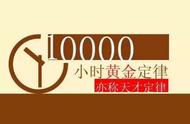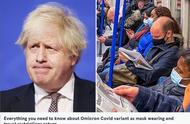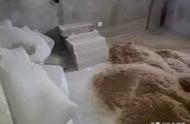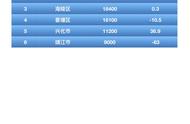自从上世纪以来,美国已经接连击垮了4个“世界老二”,分别是英国、德国、苏联以及日本。美国是一个十分有危机感的国家,对于维持自己的霸权地位相当重视,从来不允许其他国家随意超越美国。此前美国总统拜登更是公开表示,在自己任期内不会让中国超越美国。虽然中国从未想过超越美国,但美国自身还是相当有危机意识的,已经开始针对中国采取各种行动,想要压制中国前进的脚步。在美版知乎Quora上,美国网友提问道:为什么美国成功地打断了日本的崛起,却没有阻止中国?这个问题引起各国网友的围观和热议,我们看看他们的观点。

问题:为什么美国成功打断了日本的崛起,却没能阻止中国的复兴?

旅居日本的美国网友史蒂文•科尔比的回答
In 1985, Japan surpassed the United states to become the world's largest creditor country, and products made in Japan flooded the world. The crazy expansion of Japanese capital made the American industry exclaim that "Japan will take over the United States peacefully!"
1985年,日本超过美国成为世界上最大的债权国,日本制造的产品充斥全世界,日本资本的疯狂扩张让美国业界惊呼“日本将和平接管美国!”
Many U.S. manufacturing companies and congressmen began to lose their breath and frequently lobbied the U.S. government, strongly urging the Reagan administration to intervene in the foreign exchange market and devalue the U.S. dollar to save the depressed U.S. manufacturing industry. Many economists even joined the ranks of lobbying the government to change its support for the strong dollar.
许多美国制造公司和国会议员开始沉不住气,频频游说美国政府,强烈敦促当时的里根政府干预外汇市场,让美元贬值,以挽救萧条的美国制造业,许多经济学家甚至加入了游说政府改变支持强势美元立场的行列。

In September, 1985, US Treasury Secretary jamesbeck, Japanese Treasury Secretary Takeshita, former Federal German Treasury Secretary Gerhard Stoltenberg, French Treasury Secretary Pierre beregovo, British Treasury Secretary NigelLawson and other finance ministers of five developed industrial countries held a meeting at the Plaza Hotel in New York, agreeing to intervene in the foreign exchange market and devalue the US dollar against major currencies in an orderly manner, To solve the huge trade deficit of the United States.
1985年9月,美国财长詹姆斯·贝克、日本财长竹下、前联邦德国财长格哈德·斯托尔滕贝格、法国财长皮埃尔·贝列戈沃、英国财政部长奈杰尔·劳森(NigelLawson)和五个发达工业国家的其他财政部长五国政府在纽约广场酒店举行会议,同意干预外汇市场,有序地使美元兑主要货币贬值,以解决美国巨大的贸易赤字。
As the agreement was signed at Plaza Hotel, it is also called "Plaza Agreement". The agreement stipulates that the Japanese yen and the mark should rise sharply to restore the overvalued dollar price. After the signing of the Plaza Accord, the five countries intervened in the foreign exchange market and began to sell dollars, which triggered a selling boom among market investors and led to the continued sharp depreciation of the dollar.
由于该协议是在广场酒店签署的,因此该协议也被称为“广场协议”。该协议规定,日元和马克应大幅升值,以恢复被高估的美元价格。广场协议签署后,五国干预外汇市场,开始抛售美元,进而引发市场投资者的抛售热潮,导致美元持续大幅贬值。
Since then, the US government authorities headed by US Treasury Secretary Baker and experts represented by fredbergsten (then director of the US Institute of International Economics) continued to verbally intervene in the US dollar, saying that the US dollar exchange rate was still high at that time and there was still room for decline.
此后,以美国财政部长贝克为首的美国政府当局和以弗雷德·伯格斯滕(时任美国国际经济研究所所长)为代表的专家继续口头干预美元,表示美元汇率当时仍处于高位,还有下跌空间。
Due to the tough stance of the US government, the US dollar continued to fall sharply against the Japanese yen. In September, 1985, the exchange rate of the Japanese yen was 250 yen to pay 1 US dollar. Less than three months after the Plaza agreement came into effect, the Japanese yen rapidly appreciated to 200 yen to 1 US dollar, an increase of 20%. At the end of 1986, the exchange rate of the Japanese yen against the US dollar was 152 yen. In 1987, it reached the highest value of 120 yen against the US dollar.
由于美国政府的强硬立场,美元兑日元汇率继续大幅下跌。1985年9月,日元汇率从250日元兑付1美元,在《广场协议》生效后不到三个月,日元迅速升值至200日元兑1美元,增幅为20%。1986年底,日元兑美元汇率为152日元,1987年达到120日元兑1美元的最高值。
















